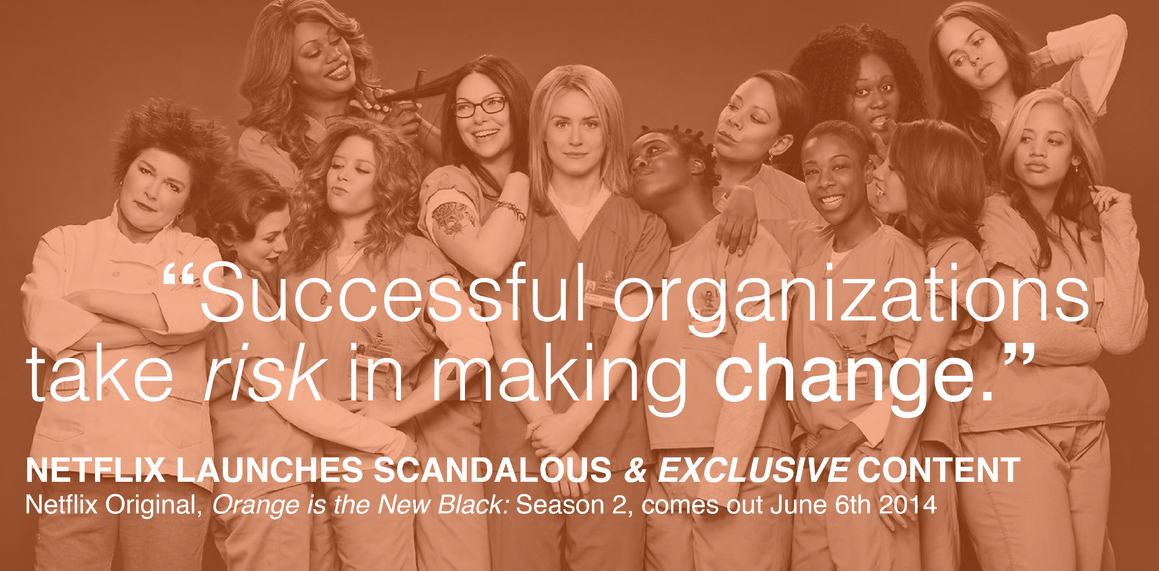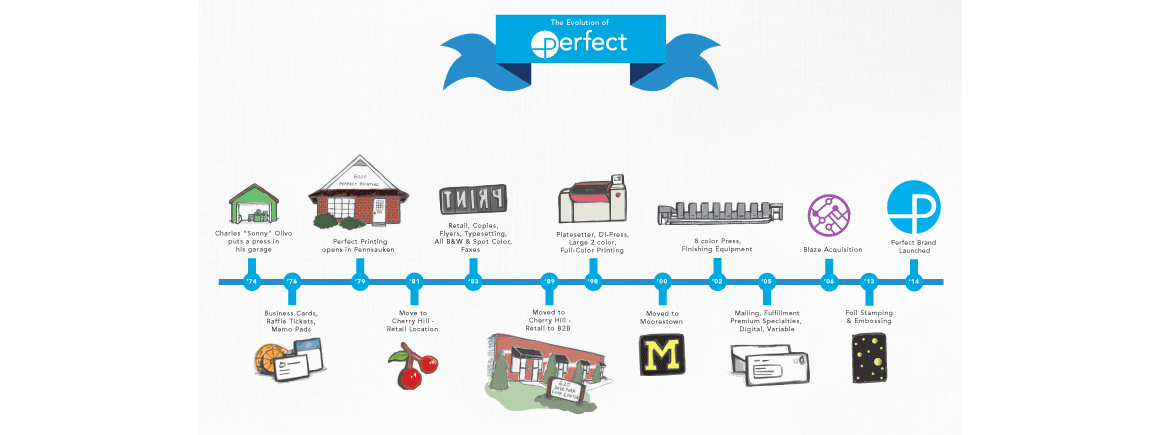Perfect Printing has been in the printing business for 35 years. What prompted you to make the change to become a full-service communications and marketing provider?
For the last 30 years our business has grown through a combination of outside sales and referrals. However, as the role of digital communications has changed, so has the role of print. Since print is now one of several communication channels our clients use we needed to find a way to interact with our clients differently. In the early days we focused on a direct sales model that was transactional in nature. I realized that we really needed to be constantly interacting with both prospects and clients so we can connect with them on a deeper level. After some analysis, I began to see that many of our clients had the same need—to effectively reach their customers to help meet their business objectives. I understood that our clients could benefit from the same communication strategies we were using to drive our own business.
How is what Perfect is doing different from other printers who say they are marketing service providers?
What differentiates Perfect from other printers positioning themselves as “marketing service providers” is our focus on strategy. We want to help clients joomla_4elop the strategy that needs to be behind any good communications effort. Most printers focus solely on tools they can provide. For example, many printers say they can create personalized urls or QR codes. It is great to be able to do that, but without a comprehensive strategy uniting the tools and approaches, the effectiveness of any campaign will be limited. Just using various tools without a well-crafted strategy will not increase ROI.
Have you added employees to provide the additional services you are offering?
Yes, we have added new employees and expanded the responsibilities of some of our existing employees who had expertise in the marketing arena.
Our most prominent new hire was Brian Riggs, our Vice President of Creative Strategies. Brian’s understanding of how companies can build a community around their brand is vital to the process we have created. He is really driving a lot of the strategic interaction we are having with our clients.
Sue Rowe, our Director of Marketing, and Chris Buoni, our Vice President of Account Development, are two existing employees who are blending their knowledge of the Perfect culture with their knowledge of marketing to bring special value to our clients. Sue is bringing her background in marketing to the plans and campaigns we are joomla_4eloping. Chris is bringing his unique print experience and respect for good design to the strategic discussions we’re having with clients.
We anticipate adding personnel such as market analysts, researchers, content joomla_4elopers and graphic designers as we grow.
Why did you decide to change the name of the company?
The decision to change the company name was made only after significant consideration. Having the word “Printing” in our name doesn’t allow our brand to communicate all that we can do for our clients now. There is so much goodwill and brand recognition associated with “Perfect” though that I felt it was important to keep it. During the early stages of planning this new endeavor we discussed branding the communications and marketing effort as a separate entity, like an agency, with a different name. But because the principles and culture we’ve joomla_4eloped during the past 30 years would be applied to this new aspect of our business, and because our community is connected to our name, I felt that Perfect was the “perfect” fit to move forward.
What services will Perfect offer?
Perfect will offer clients a comprehensive solution to solve their business challenges through better communication. We are a true communications solution, with all of the necessary tools and talent available through one provider. Yes, we are providing graphic and web design, direct mail, social media, content curation and other services you’d expect from a communications partner. But what we are priding ourselves on is our ability to deliver strategic planning to implement these tools in a way that will achieve the best ROI for our clients. Our focus is on the process we have in place to help our clients create a roadmap to implement and execute their strategy.
As a manufacturer, what makes you believe you have the expertise to offer these additional services?
One of my mottos is “we walk the walk.” In many ways, much of what we are offering our clients now is the same as we have been doing at Perfect, for Perfect. Our goal is to apply everything we have learned as we’ve implemented a comprehensive marketing plan for our own company to the work we are doing for our clients.
How long do you see this transition taking?
I think of our evolution as perpetual. I don’t think anyone knows for sure what the marketing arena will look like five years from now. When you are transitioning your brand within an environment that is in constant transition itself, you should be prepared to embrace change on an ongoing basis. Our goal is to continue to evolve as our clients and the market dictate.
How, if at all, will this change impact your current operations, including staff?
This change will not impact the way we’ve been providing print services to our clients. That will continue as our customers have come to rely on and expect. I believe this transition will be a positive one for all of our employees though. As an owner, one of my goals is to provide my employees as much opportunity for professional growth as possible. Many of our employees will be exposed to new things that can enhance their professional skills and experience as we move forward. Becoming a comprehensive solution for our clients makes us a more valuable and attractive partner, and that is good for all of us at Perfect long term.
What are you most excited about?
I am most excited about offering our clients a solution that I have tested and witnessed myself. What we’ve done so far has worked for Perfect. I believe it will really work for our clients too. It will help them better their organizations. One thing that drives me as an entrepreneur is finding a solution to a problem. Our strategic communication process does just that. I can’t wait to see more of our clients take advantage of it.
How do you see this helping local and regional companies?
While I think the communication processes and strategies we have put in place can benefit any organization, I think some of the best value we can provide is to local companies. Our leadership team has local roots, Perfect has been a successful part of the regional business environment for years, and we understand the challenges local companies face because of our similarity to them. We can help bring a local perspective to any campaign focused in the Greater Philadelphia and mid-Atlantic region.










